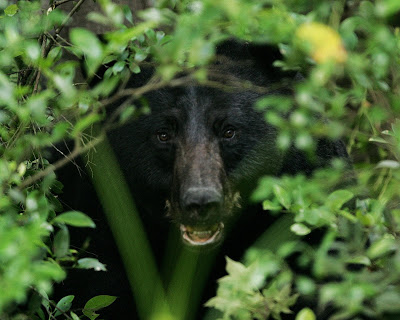Bear loads. Those words get people’s undivided attention. Anyone who hunts bears, or lives/travels in bear country, wants the most effective round they can get because their life may depend on it.
We found this fun video which pits a Benneke 12 gauge slug against the venerable .45-70 Government and the flinch inducing .500 Smith & Wesson Magnum. The person who performed this test used stacked paper plates as a test medium. Granted, it’s a bit back-woods, but compressed paper is quite tough and not a bad analogue for bone and heavy muscle. While this is perhaps not an ideal test, it does provide a reference point to compare each round’s penetration and energy transfer.
Keep a special eye on which load knocks the plates and test fixture back the hardest. This gives a good idea how much energy is transferred to the target and how big a shove it might give a big critter. Remember, the primary goal for bear defense cartridges is to turn a charge more than to kill the animal. We here at LocaCarnivore were surprised at the results in this test. If we found any major fault, it is the producer should have used bear-specific hard-cast lead bullets in the rifle and revolver rather than jacketed soft-points. Although, it does provide an inkling what would happen if a hunter had to use a deer/elk round against a bear in a pinch.
Sit back and enjoy the mayhem!
Other helpful stories you’ll like:
10 Life or Death Tips About Bear Defense Handguns [Video]
The Best Bear Defense Handgun
Use Enough Gun: Why You Should Bring a Big-Bore to a Bear Hunt










2 comments
The key is bullet construction the 45-70 should have beaten the 500.S.W it has a higher velocity and higher sectional density but it wasn’t constricted as well as the 500SW
405 grain, .45-70 nominal muzzle velocity: 1394 FPS. 400 grain, .500 S&W nominal muzzle velocity: 1675 FPS. While the video presenter did not state the bullet construction for each, the test’s results would lead one to believe each was an unbonded, base jacketed soft point, neither of which is recommended as a stopping load for bear. Hard-cast lead or mono-metal solids are preferred for this role and would have produced greater penetration than the loads used in the video. As to whether the .45-70 or .500 is superior, if I were a bear, I’d rather not get shot with either. Alaska bear guides use both, and both have an excellent reputation–with the proper bullets.